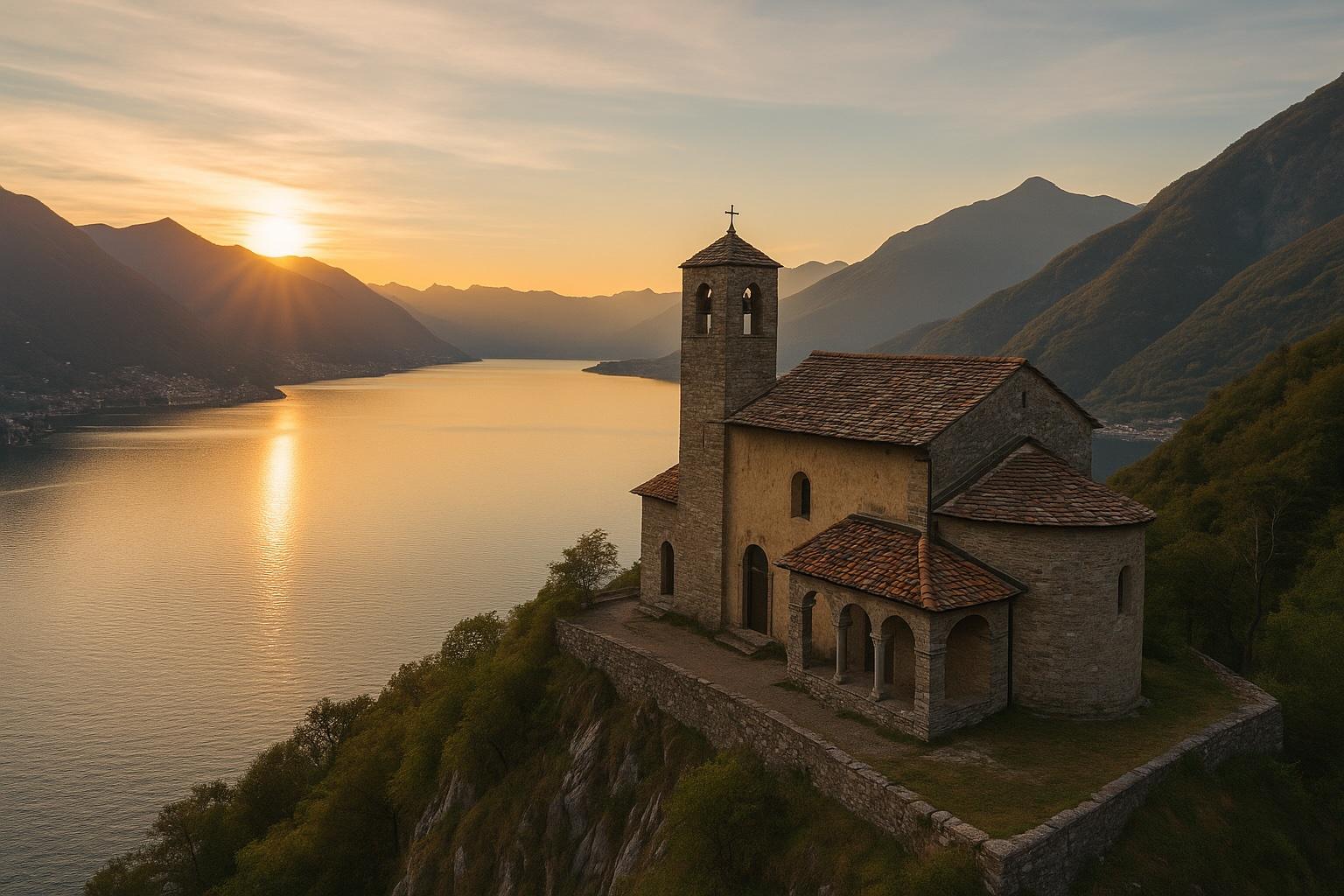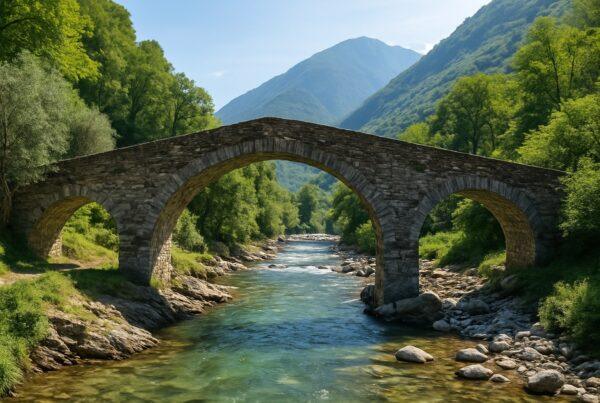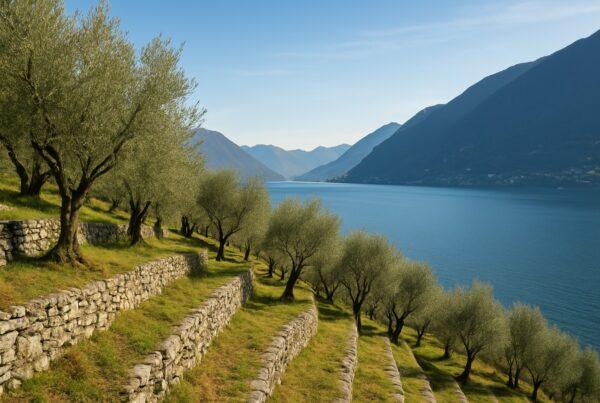Lake Como is best known for its villas and its waterside villages, but to truly understand its soul one must look upward. Scattered across the slopes, perched on ridges or hidden among chestnut woods, sanctuaries and abbeys have watched over the lake for centuries. Built in stone and often reached only by long climbs, these places carry stories of devotion, resilience, and silence. They are not just monuments but living testimonies of how faith, nature, and community have intertwined on the lake’s shores.
A tradition rooted in history
From the Middle Ages onward, sanctuaries and hermitages became part of the landscape of Lake Como. Some were built after plagues or wars, erected as votive offerings for protection or gratitude. Others were born from hermits seeking solitude, later attracting pilgrims who turned their retreats into enduring shrines. Always, stone was the material of choice—solid, eternal, able to withstand the passage of time and the harshness of the mountains.
Climbing toward these sanctuaries was itself an act of devotion. The effort of the ascent mirrored the inner journey of prayer and sacrifice. Even today, the trails that lead to them carry a sense of pilgrimage, where every step is accompanied by views that gradually open to reveal the immensity of the lake below.
The Abbey of Piona
On the northern tip of the lake, in Colico, lies one of the most extraordinary spiritual sites: the Abbey of Piona. Nestled on the Olgiasca peninsula, it seems almost surrounded by water, a monastery between lake and mountains. The abbey, with its Romanesque church and elegant cloister, dates back to the 12th century. For centuries it was home to Cistercian monks, whose life of prayer and work shaped the rhythm of the place.
The cloister, with its delicate arches and carved capitals, is among the finest in Lombardy. Each stone tells of a time when silence and meditation guided daily life. Even today, the abbey is alive with monastic presence. The monks welcome visitors, offering products made with medicinal herbs and reminding that spirituality here is not a relic but a practice still carried forward. To walk among the cloisters of Piona is to feel suspended in time, surrounded by the waters of the lake and the quiet strength of stone.
The Sanctuary of Madonna del Soccorso
On the western shore, above Ossuccio, rises the Sanctuary of the Madonna del Soccorso. Reached by a steep cobbled path lined with chapels, this site is part of the Sacro Monte di Ossuccio, recognized by UNESCO as a World Heritage Site. Built in the 17th century, the sanctuary overlooks the Comacina Island and the central part of the lake, offering one of the most breathtaking views of all.
Pilgrims once came here to give thanks or ask for protection, climbing in silence as they prayed at each chapel. Today, visitors still follow the same route, feeling the weight of history in every step. The sanctuary, with its white façade and serene atmosphere, embodies both the devotion of past centuries and the beauty of a landscape where faith and nature blend seamlessly.
San Martino above Griante
Few sanctuaries capture the imagination like San Martino, perched high above Griante. The path to reach it is steep but rewarding, winding through meadows and woods until suddenly the small church appears against the vast backdrop of lake and mountains. The sanctuary was built in gratitude for protection from landslides, and its presence on the cliffside is both dramatic and reassuring.
Standing at its threshold, one feels the immensity of Lake Como stretching below. The villages look like miniatures, boats cross silently, and the Alps rise beyond. It is a place where faith meets wonder, and where the effort of the climb is repaid with one of the most spectacular panoramas in the region.
Santa Maria del Castelletto in Varenna
Varenna, with its pastel houses and romantic lakefront, hides a smaller but equally significant sanctuary: Santa Maria del Castelletto. This little church, set above the village, dates back to the 12th century and preserves ancient frescoes that speak of early devotion. The climb to reach it is short, but the sense of intimacy and history is profound. Unlike the grander sanctuaries, Santa Maria feels like a secret, a reminder that faith often took root in the simplest of places.
Legends, faith, and community
Many of these sanctuaries are tied to legends: apparitions of the Virgin Mary, miracles attributed to saints, or vows made in times of crisis. They were places where entire communities gathered, not only for religious purposes but also for social cohesion. Fairs, festivals, and processions made the sanctuaries both sacred and communal. Even today, local traditions survive—pilgrimages, patron saint celebrations, and small gatherings that keep the link between people and place alive.
Experiencing them today
For modern visitors, these sanctuaries are not only religious sites but also destinations for slow tourism. Hikers and photographers are drawn to them for their views, while seekers of peace find in them a quiet alternative to the bustle of the lakeside towns. Reaching a sanctuary at sunset or early morning can be a deeply moving experience, when the stone walls glow with soft light and the silence is broken only by the sound of bells or the rustle of leaves.
Stories carved in stone
What unites these sanctuaries is their ability to tell stories through stone. The walls, frescoes, and arches carry the imprint of centuries of faith and struggle. They remind us that Lake Como is not only a landscape of leisure and beauty, but also of resilience and spirituality. To visit them is to see another side of the lake—one where human devotion and natural majesty meet, carved forever into rock and memory.




